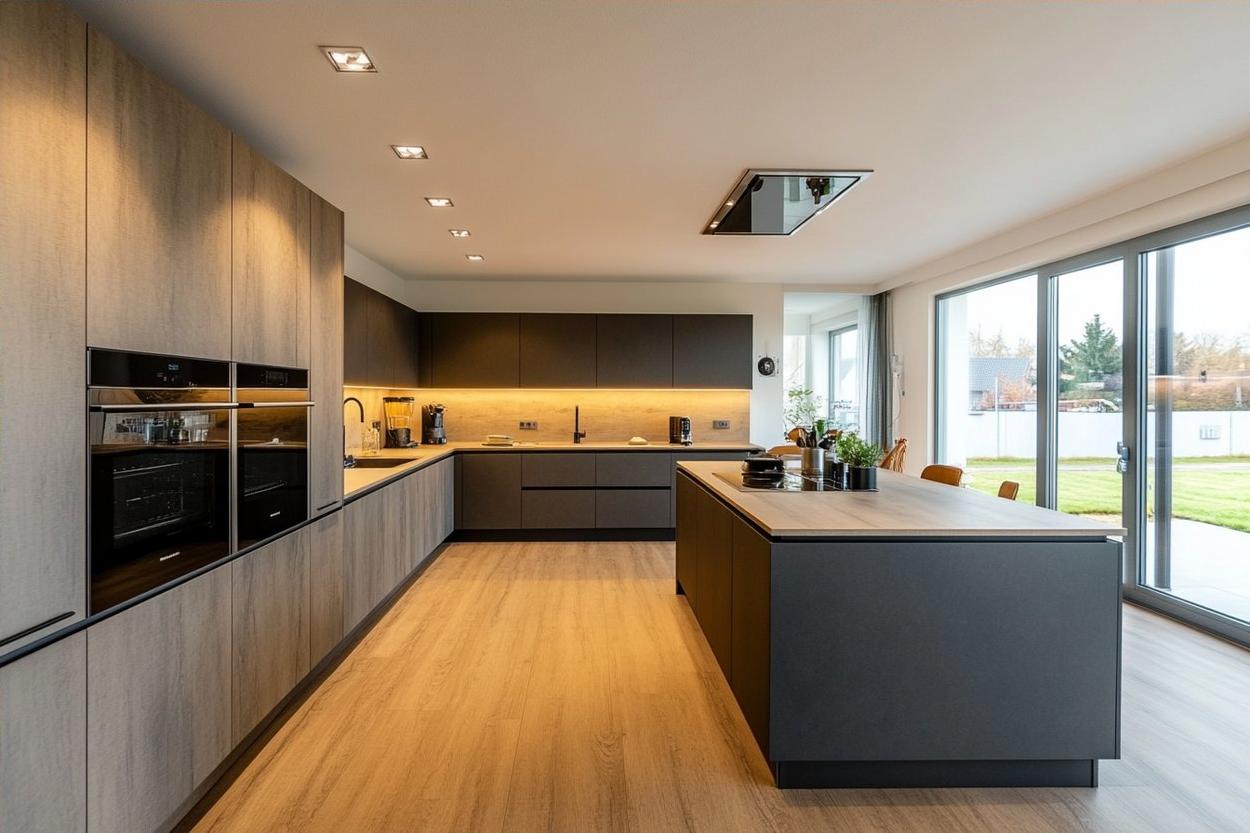Ventilation Strategies for Safer Indoor Cooking
Proper kitchen ventilation reduces smoke, odors, and airborne contaminants that accumulate during indoor cooking. This article outlines practical strategies to improve airflow, coordinate appliances and layout, and maintain a safer cooking environment by integrating ventilation with storage, cabinetry, countertops, lighting, and workflow considerations while keeping sustainability in mind.

Indoor cooking can generate grease, fine particles, moisture, and combustion byproducts that affect comfort and air quality. Beyond comfort, effective ventilation supports safety by clearing heat and visible smoke quickly, reducing the risk of false alarms, and limiting long-term exposure to pollutants. This article examines practical ventilation strategies that fit typical kitchen layouts and workflows, while touching on appliances, cabinetry, and materials that influence performance. Emphasis is on measurable steps that improve air exchange and make daily cooking safer and more comfortable.
How does ventilation fit into kitchen layout and workflow?
Ventilation should be planned alongside kitchen layout and the expected workflow. Position hoods and exhaust outlets where cooking will occur most often, typically above ranges and cooktops, and align duct runs with cabinetry to minimize bends that reduce airflow. An effective workflow keeps hot, smoky tasks near exhaust sources and locates prep and plating areas where ventilation draws air away from occupants rather than through them. Consider the placement of windows and doors: cross-ventilation can help but should not be relied on as the primary removal method for combustion products.
Placing the hood where it’s most used also influences ergonomics and organization. Ensure clearance above countertops and leave accessible space for cookware and appliances to avoid blocking airflow during cooking.
What appliances and hood options improve kitchen ventilation?
Range hoods and downdraft systems are the primary mechanical solutions. Wall-mounted and island hoods are designed to capture rising fumes; select a hood with airflow (CFM) appropriate to the cooktop size and typical cooking style. For gas cooking, higher ventilation rates help remove combustion byproducts. Recirculating hoods with filters improve odor control but do not remove moisture or combustion gases as well as ducted exhaust systems.
When choosing appliances, prioritize models with compatible ventilation recommendations and consider noise levels, filtration needs, and energy use. Properly sized ventilation reduces stress on cabinetry and surrounding materials by removing moisture and grease more effectively.
How do storage, cabinetry, and organization affect ventilation?
Storage and cabinetry layout can either obstruct or support air movement. Avoid enclosing exhaust duct openings within cabinetry spaces without proper access panels and clearances. High cabinets directly above or around a hood should allow at least the manufacturer-recommended clearance to prevent recirculation of grease and to permit maintenance.
Organization matters: keep frequently used pots and pans near the cooktop to minimize movement that disrupts airflow patterns, and store chemicals or aerosols away from heat sources to reduce vapor release into the air. Grease build-up inside cabinets and ducts can be minimized through routine cleaning and by selecting cabinetry materials with smooth, wipeable finishes.
What role do countertops, materials, and sustainability play?
Countertop materials and surrounding finishes influence how easily a kitchen can be cleaned after smoky or greasy cooking. Nonporous, heat-resistant surfaces reduce absorption of odors and make it easier to remove residues that can contribute to poor indoor air quality. Select cabinetry and wall finishes that resist staining and that tolerate cleaning products suitable for removing grease.
From a sustainability perspective, choose energy-efficient ventilation fans and appliances with good seal and insulation around ducts to minimize conditioned air loss. Heat-recovery ventilators (HRVs) or energy-recovery ventilators (ERVs) can provide balanced ventilation in tightly sealed homes while conserving energy, though they are typically supplemental to range hoods rather than replacements for direct source capture.
How do ergonomics and lighting relate to safer ventilation practices?
Ergonomics affect how people interact with ventilation: controls should be easy to reach and intuitive so users turn ventilation on early in the cooking process. Position switches for hoods or exhaust fans near the cooktop or integrate them with appliance controls to encourage use. Adequate task lighting over cooktops and countertops helps cooks see when smoke or steam is developing, prompting earlier use of ventilation.
Good lighting also reduces the chance of accidental spills or overheating that could produce more smoke. Combine downward task lighting with ambient fixtures so that shadows do not obscure signs of smoke buildup.
What maintenance and materials guidance supports long-term ventilation performance?
Regular maintenance keeps ventilation systems effective. Clean or replace filters according to manufacturer guidance, inspect duct runs for blockages or grease buildup, and ensure that exterior termination caps open freely. Use accessible panels or removable cabinetry sections where ducts run behind built-ins to simplify inspection.
Select materials that tolerate cleaning and heat exposure: stainless steel and enamel surfaces are common for hoods, while ductwork should be smooth and rigid where possible to minimize grease accumulation. Sustainable maintenance practices include using reusable grease filters cleaned on a schedule, and selecting fans with good energy-efficiency ratings to reduce long-term operating costs.
Conclusion
Safer indoor cooking starts with source control: capture steam, smoke, and combustion products at the cooktop with properly sized, well-placed ventilation and integrate that equipment into the kitchen layout, cabinetry, and workflow. Attention to appliance selection, routable ductwork, ergonomic controls, and maintainable materials extends the life and effectiveness of any ventilation strategy. When ventilation is matched to how a kitchen is used, it improves air quality, comfort, and safety without sacrificing functionality or sustainability.





